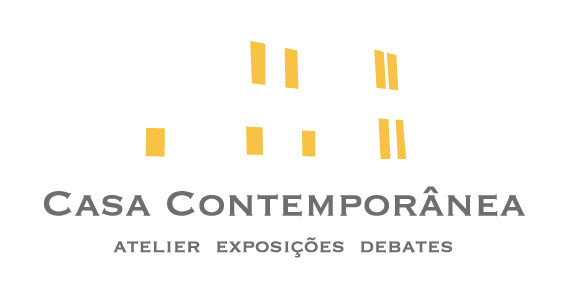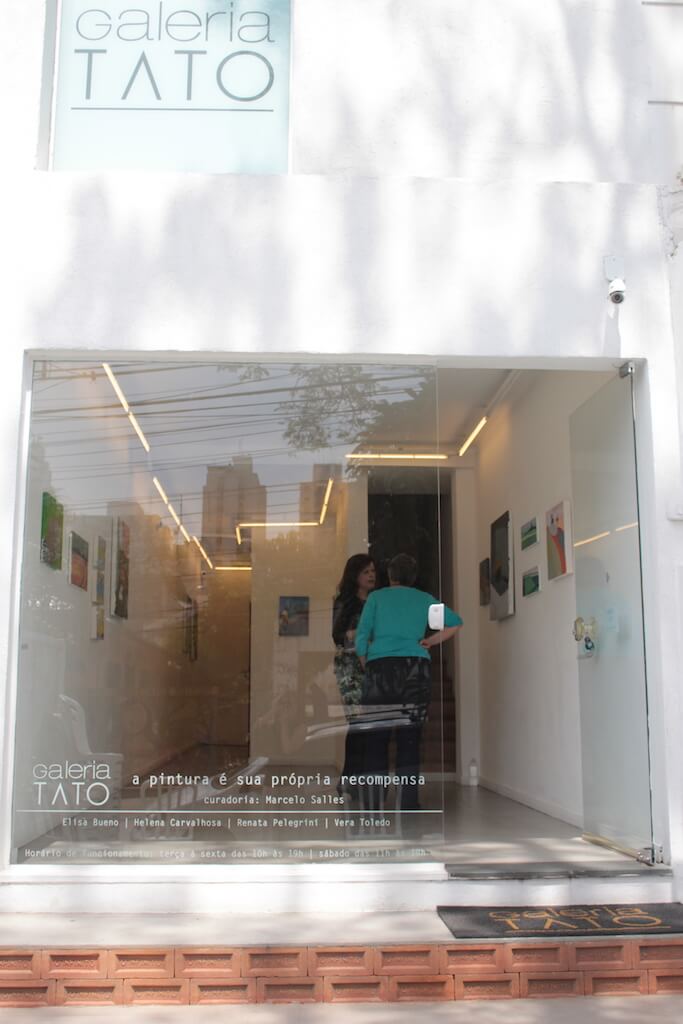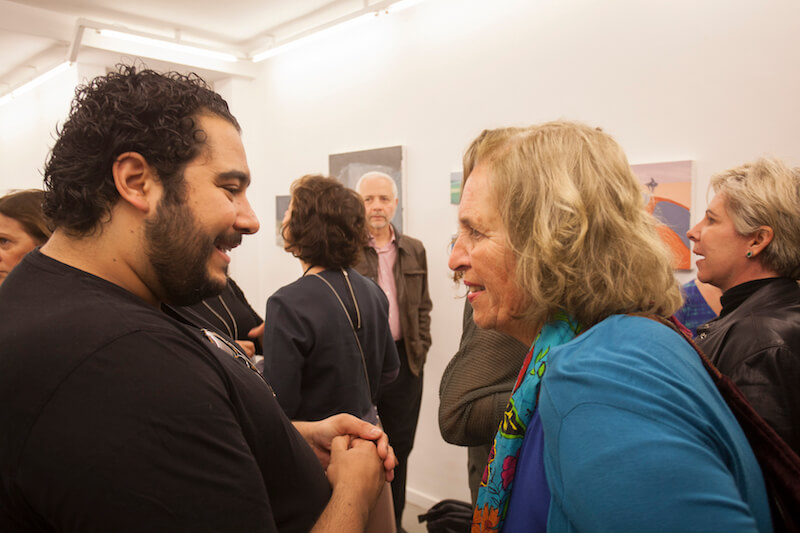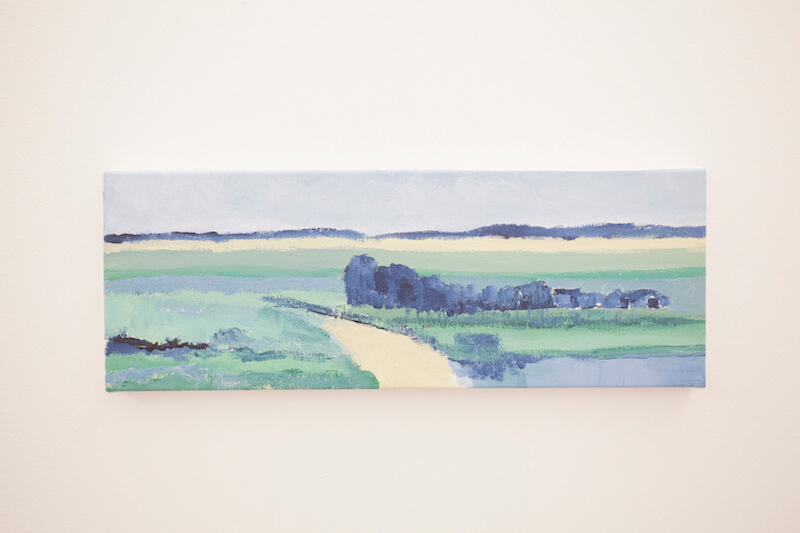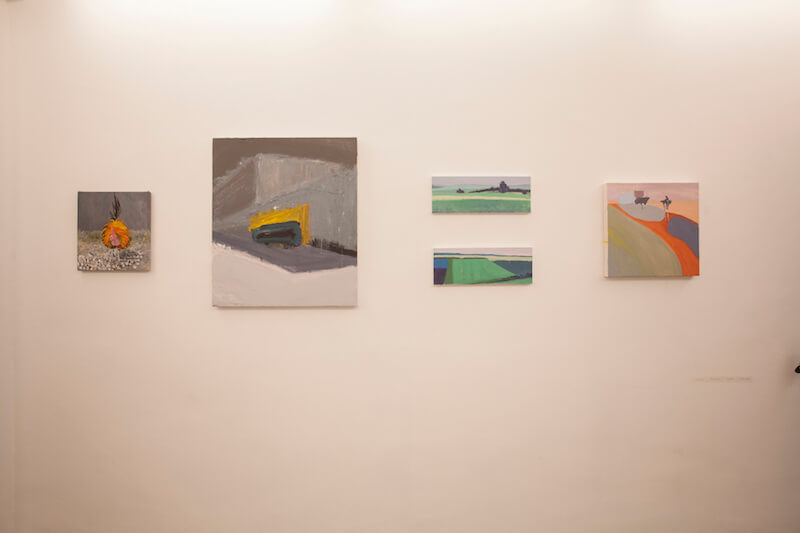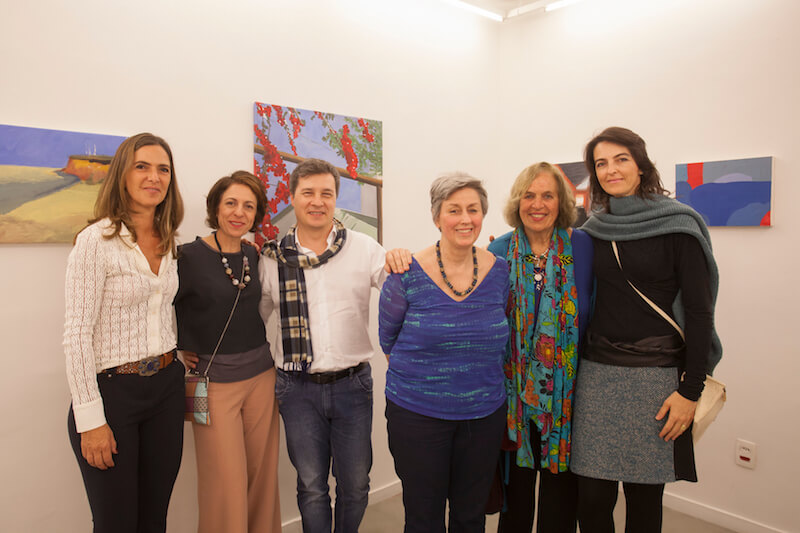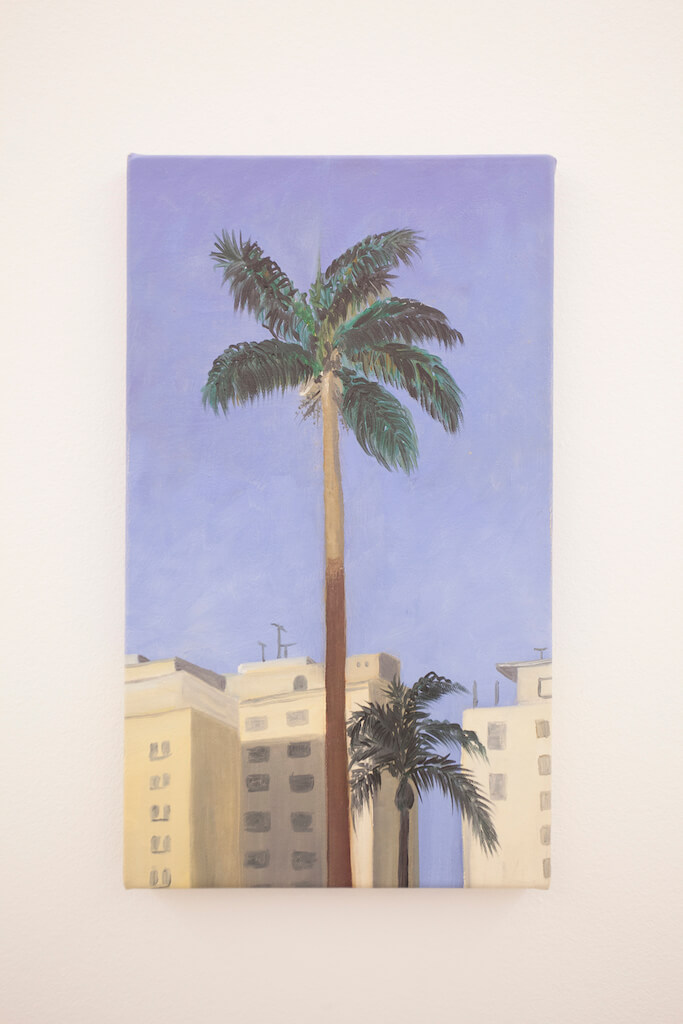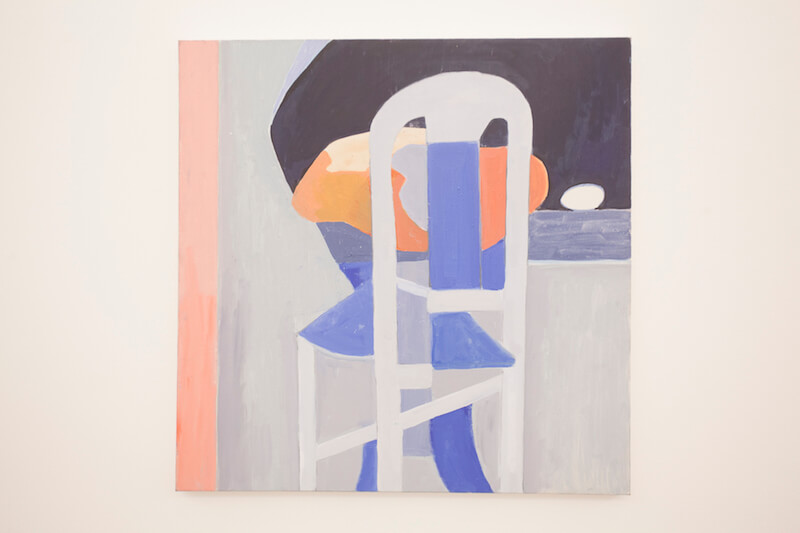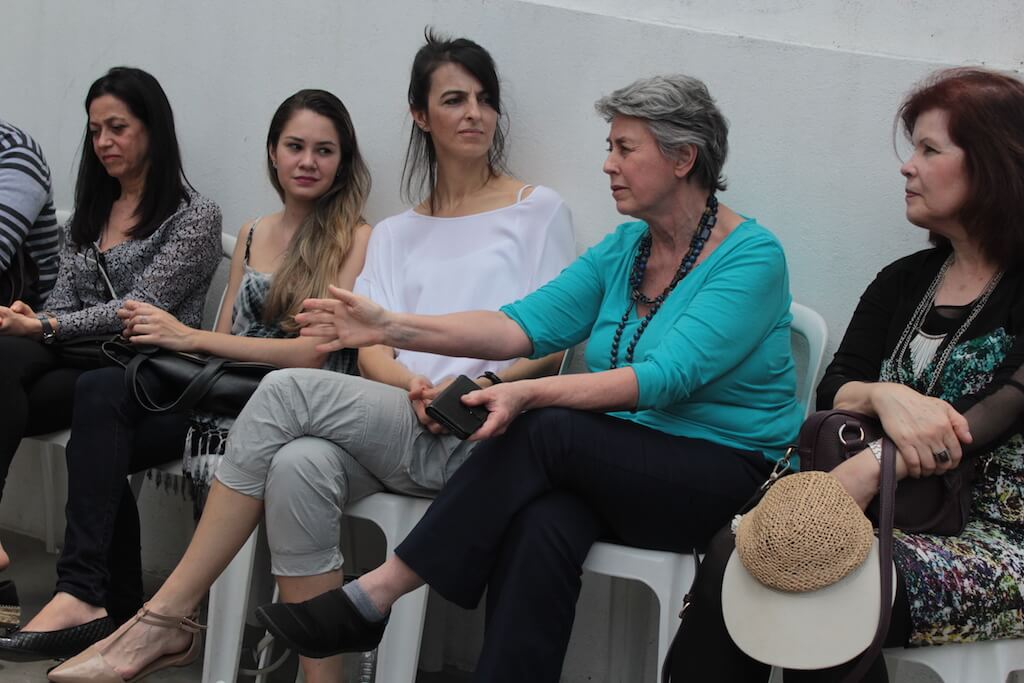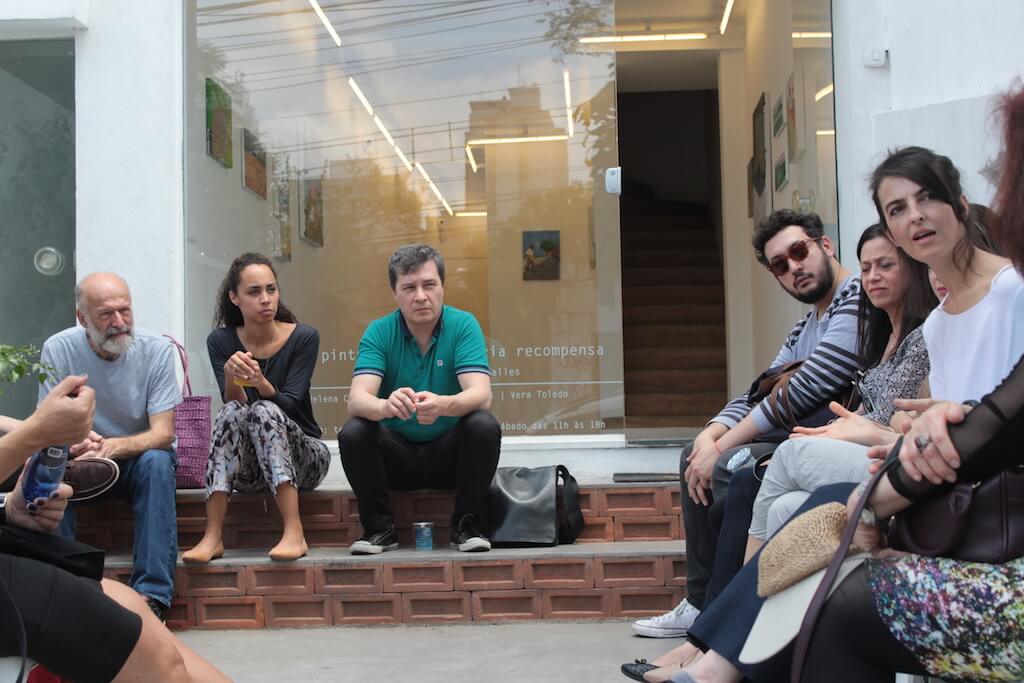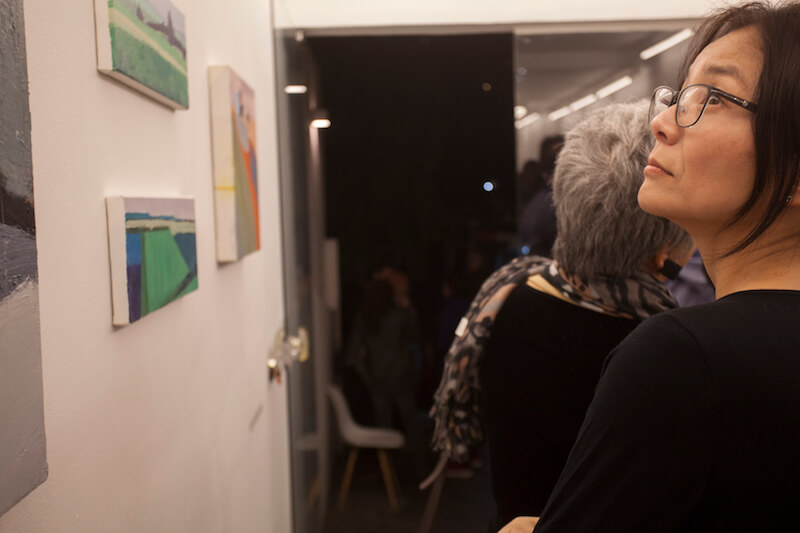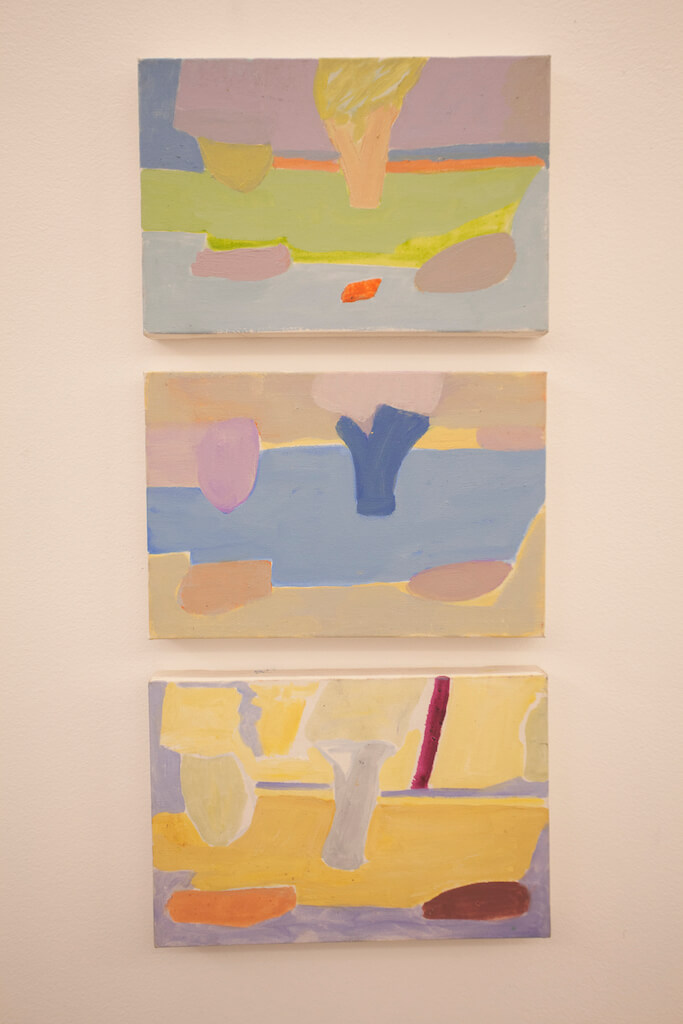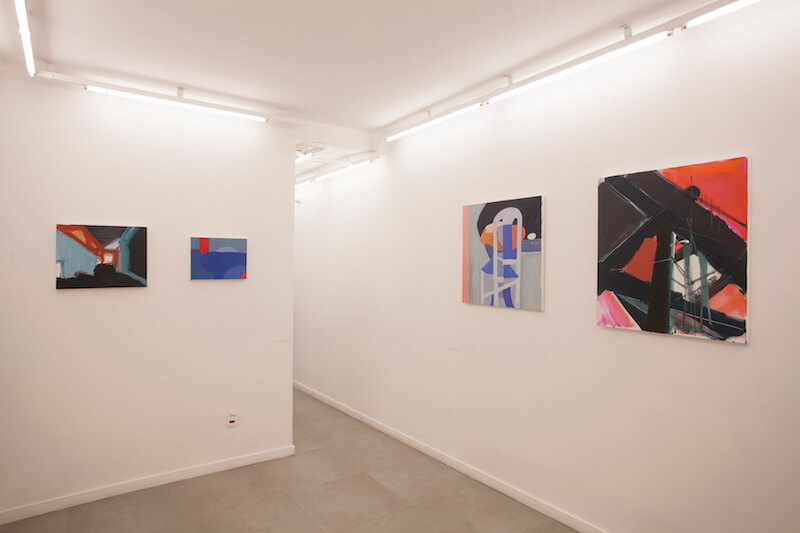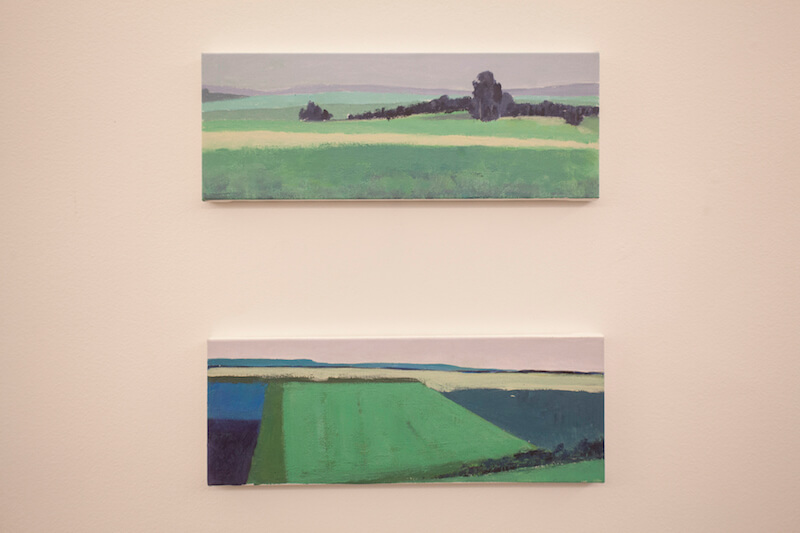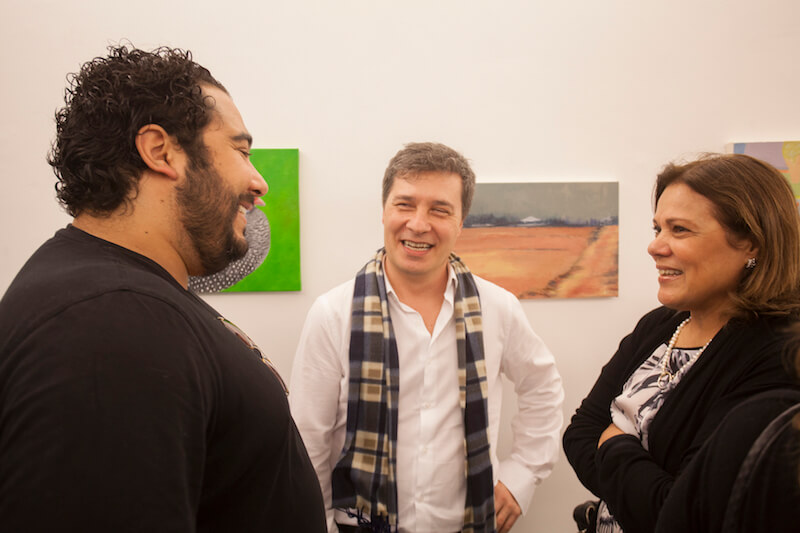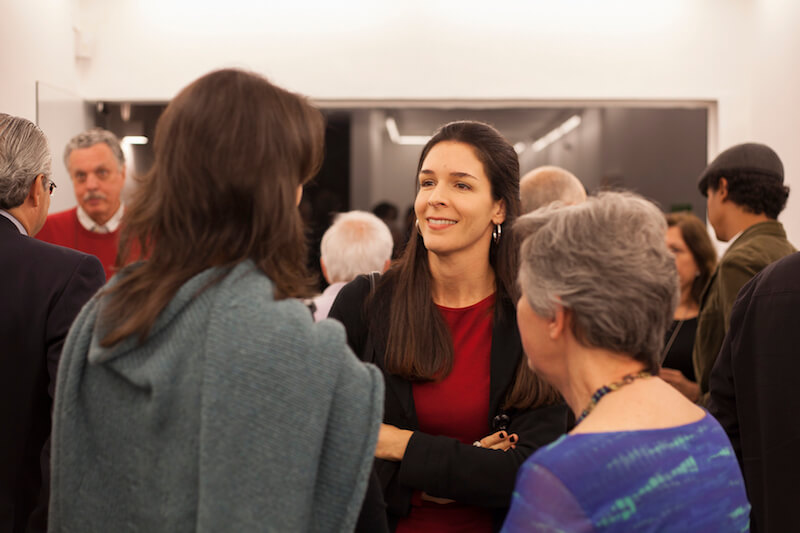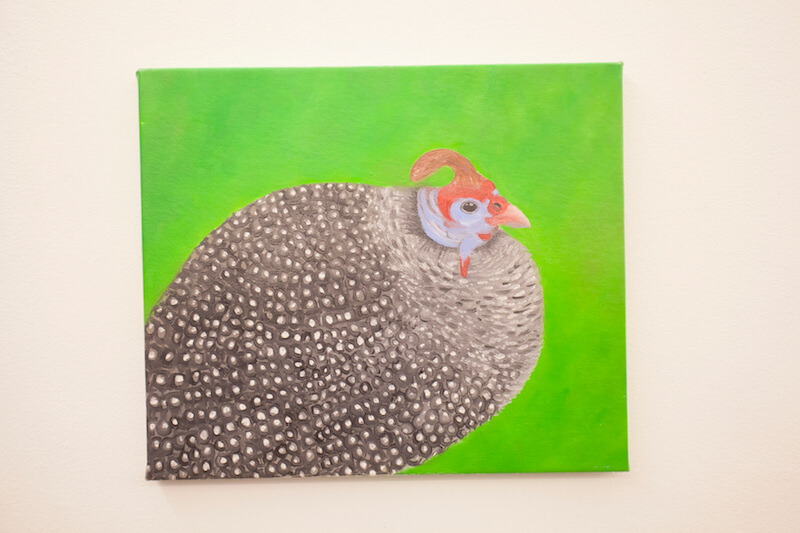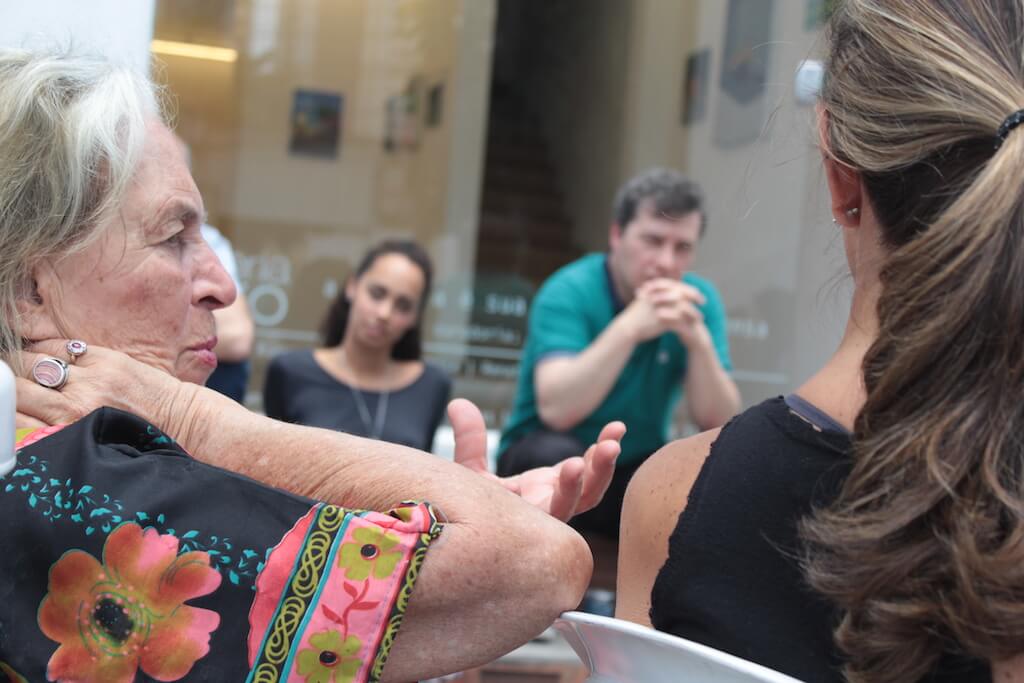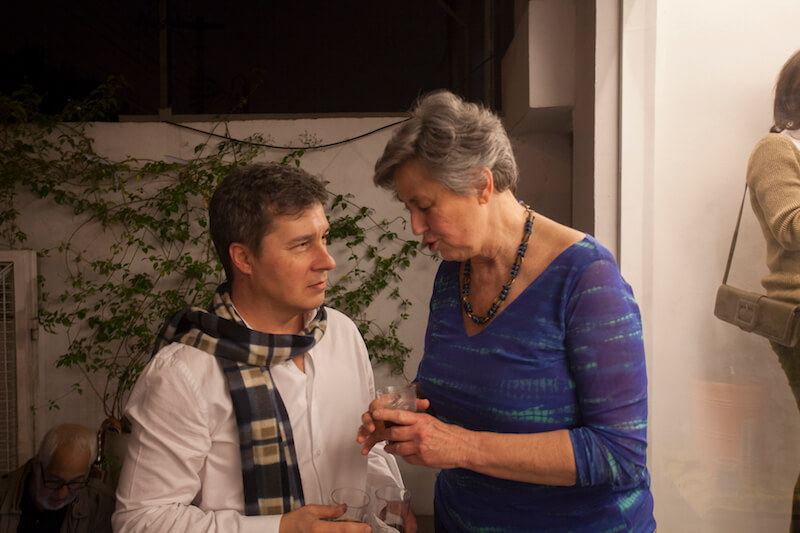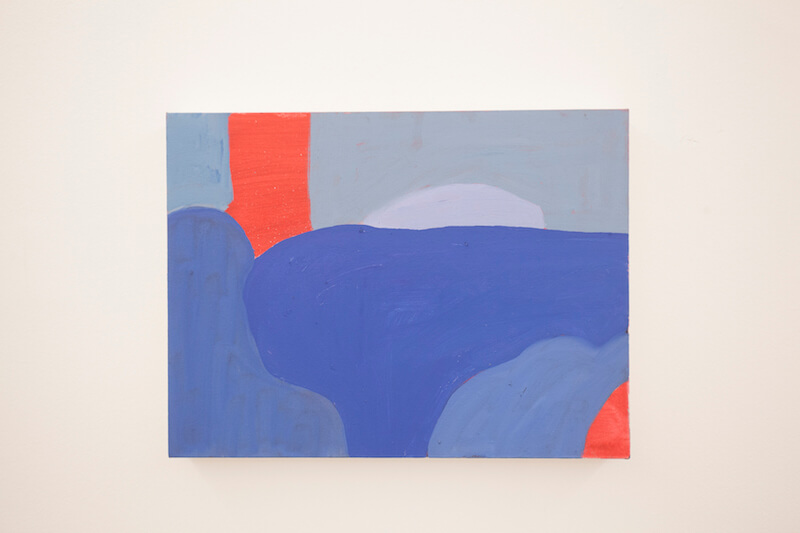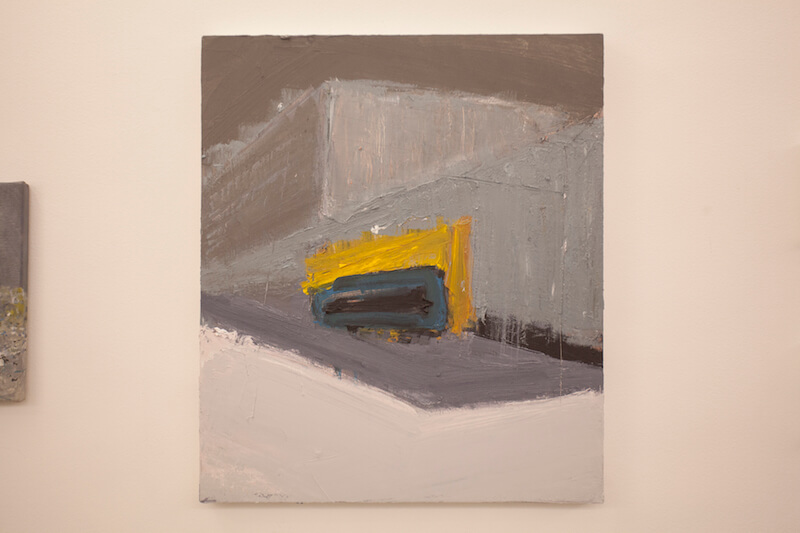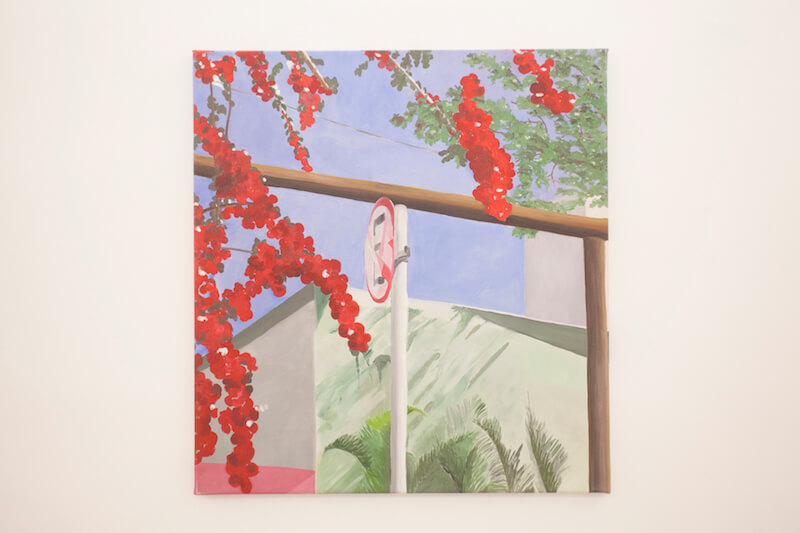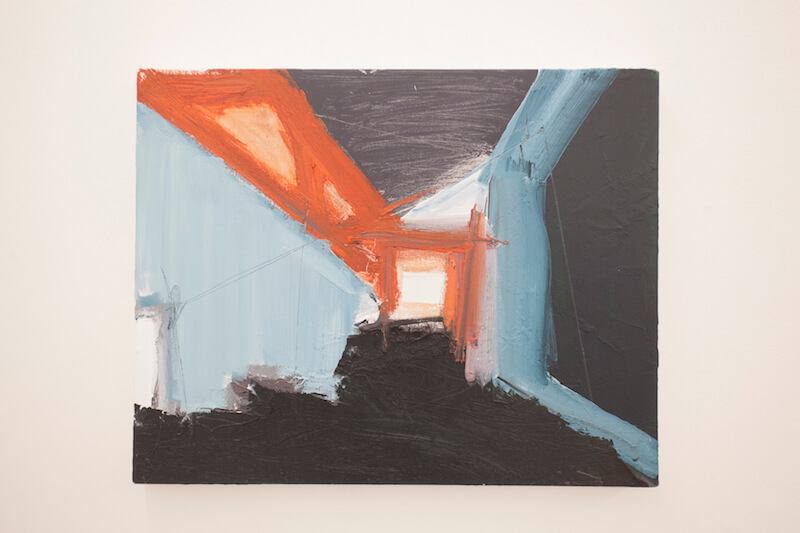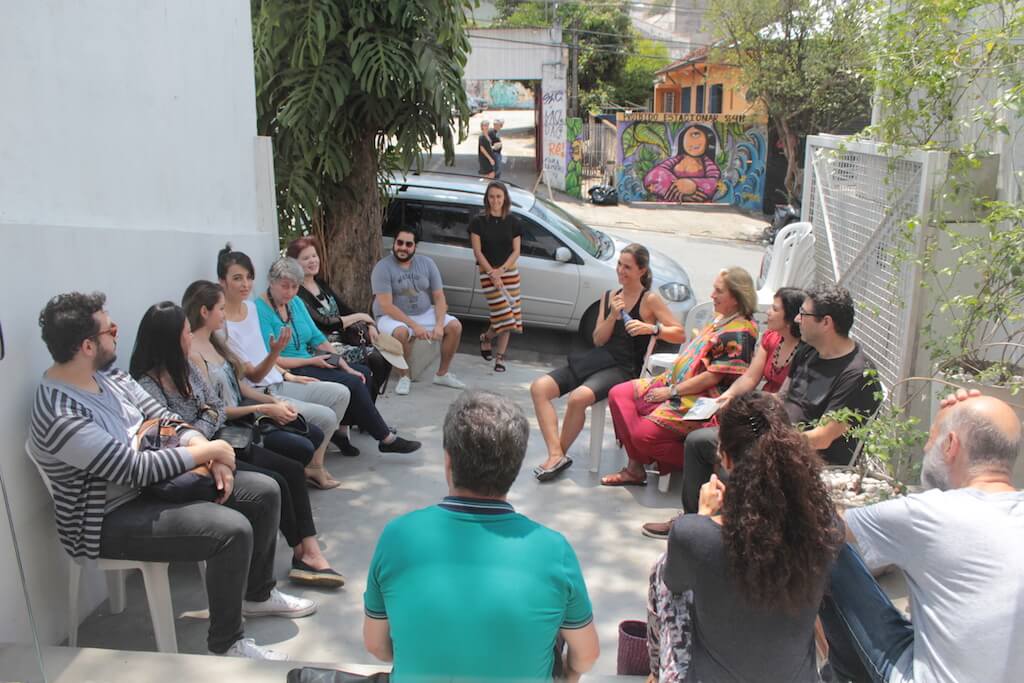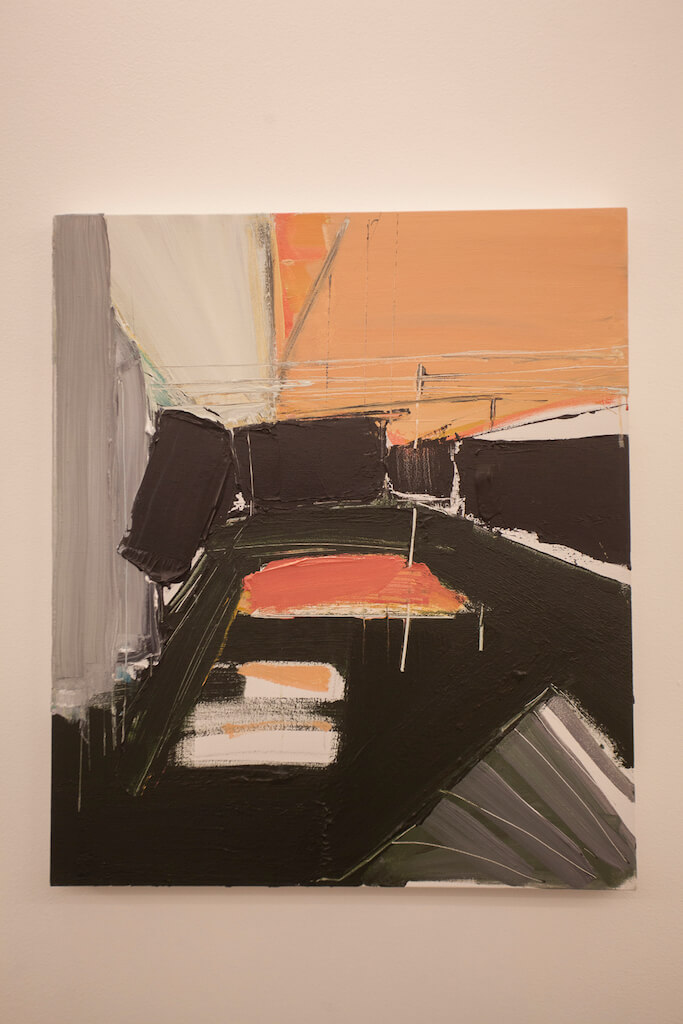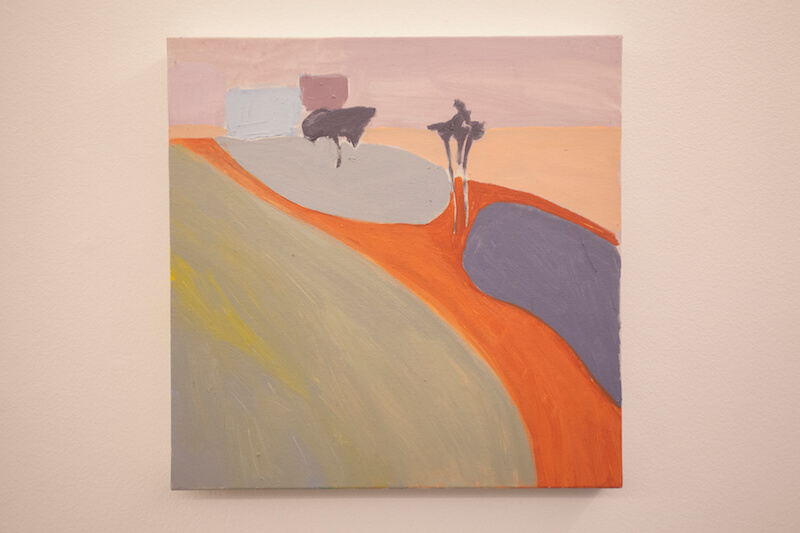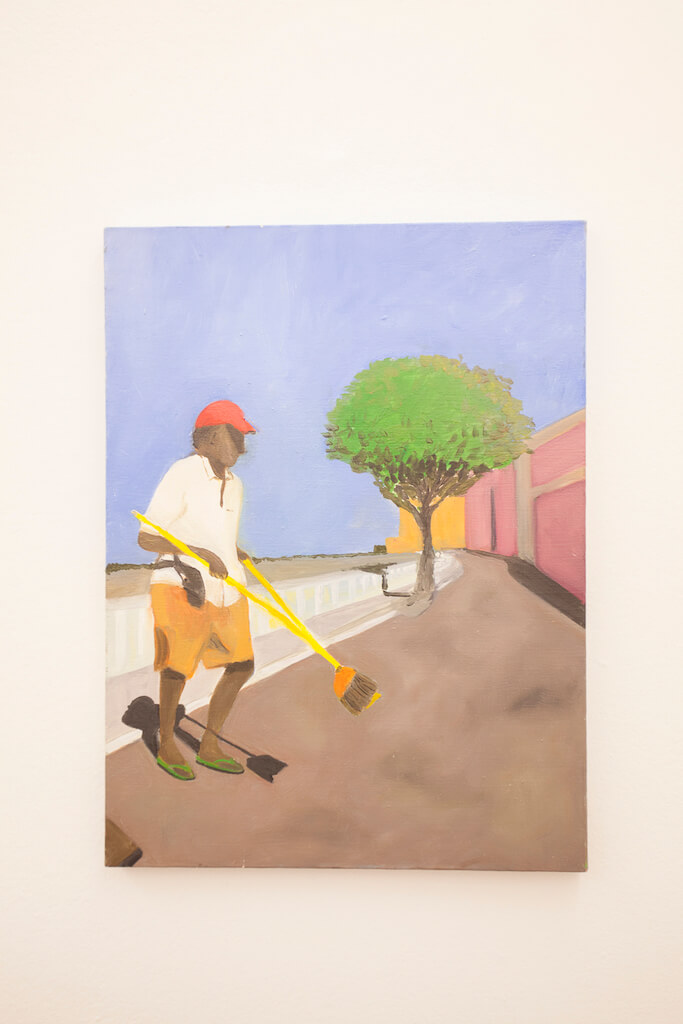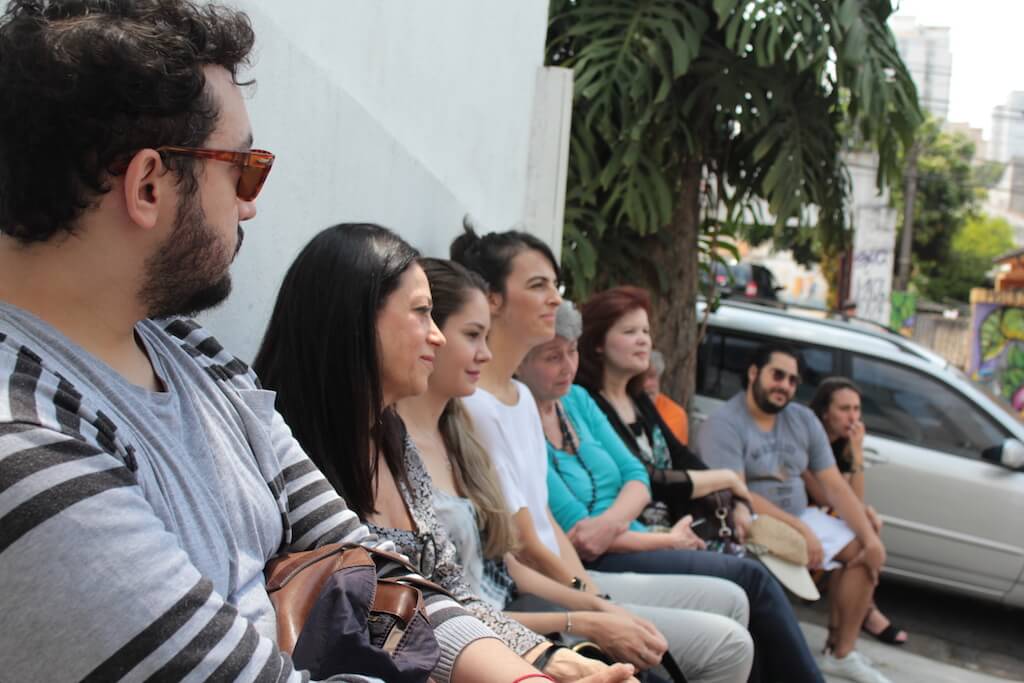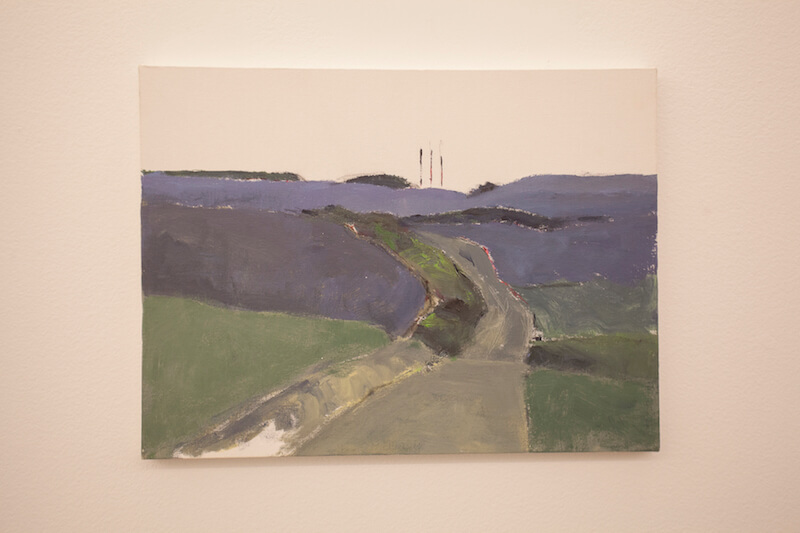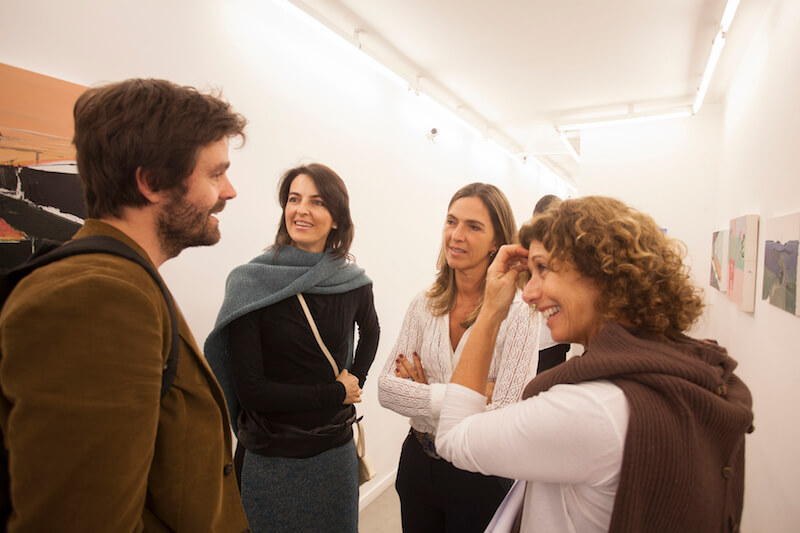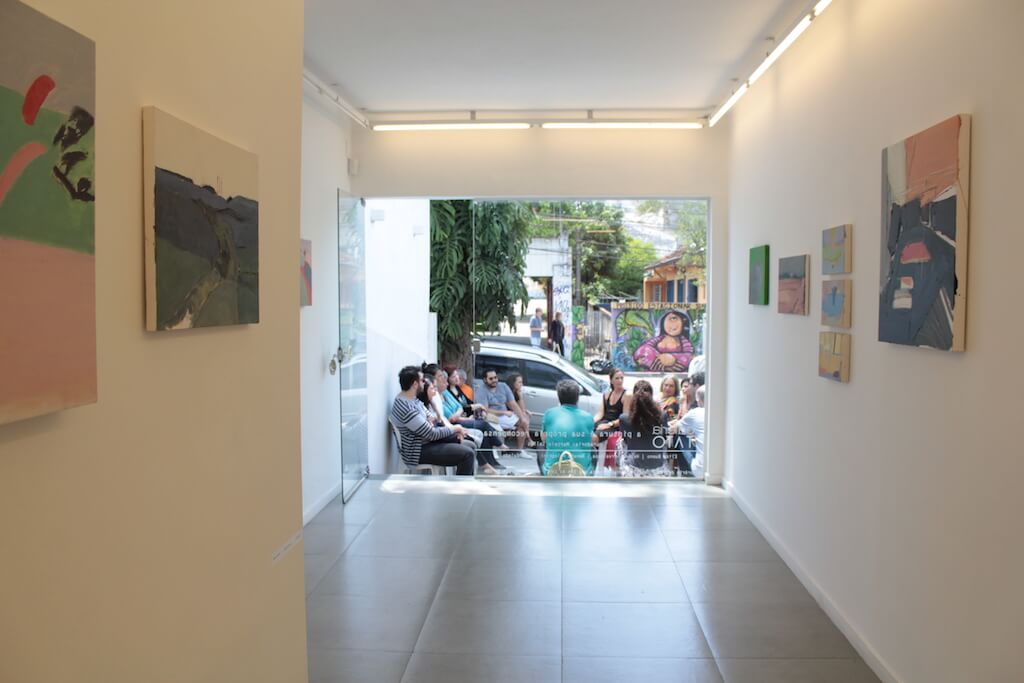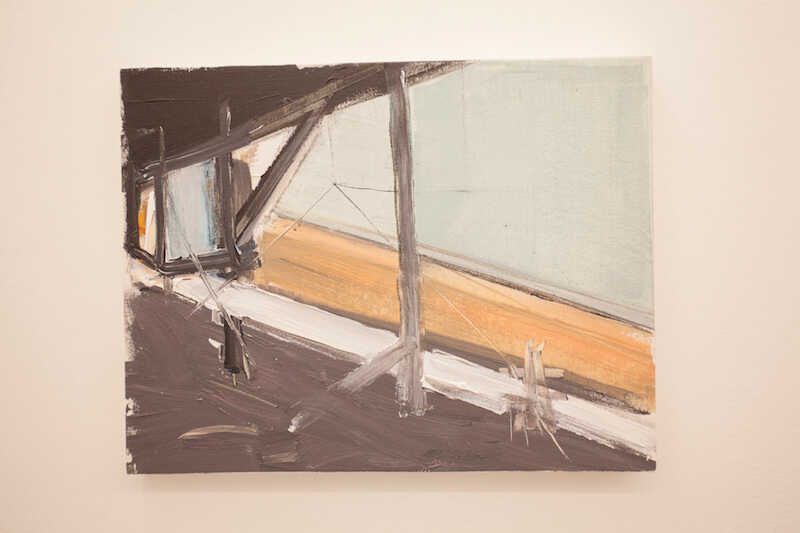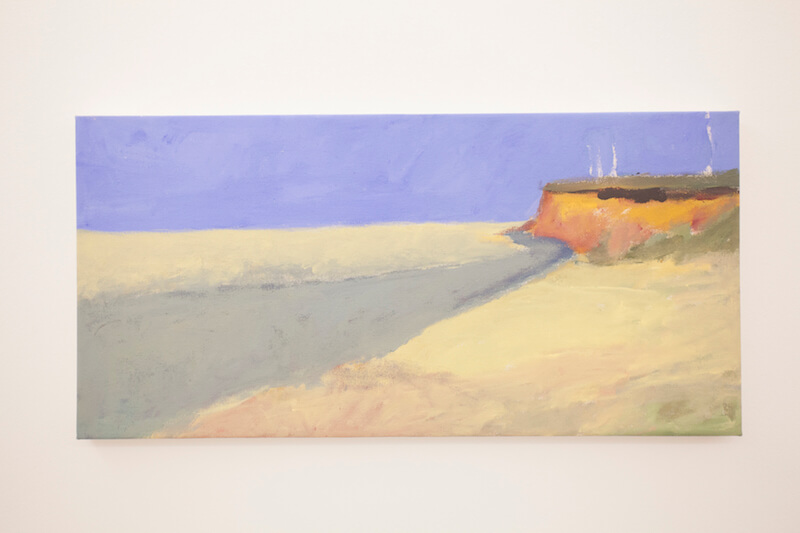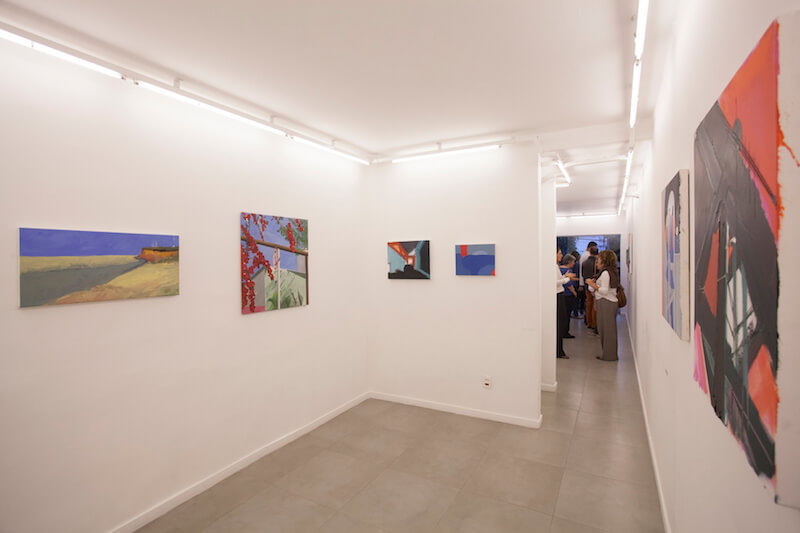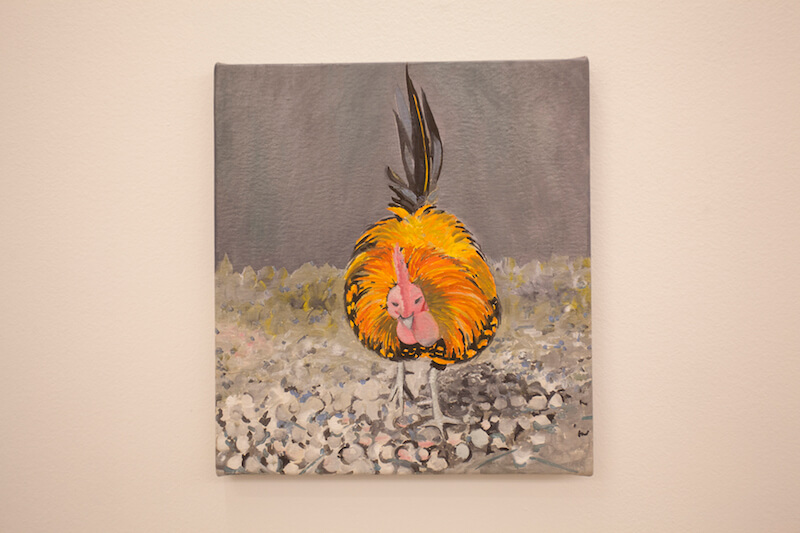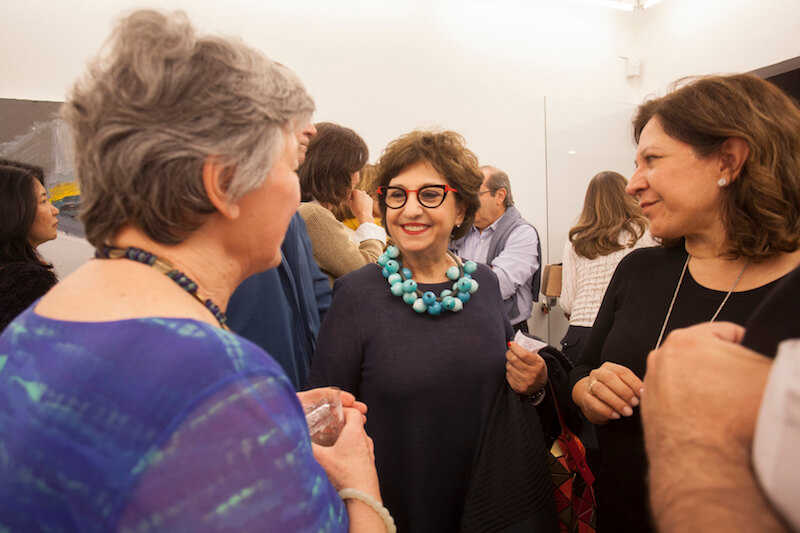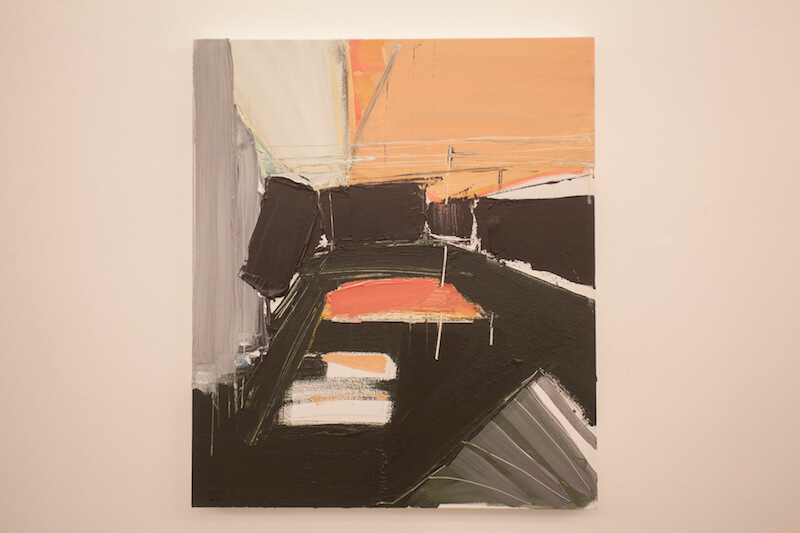Exposições
A pintura é sua própria recompensa
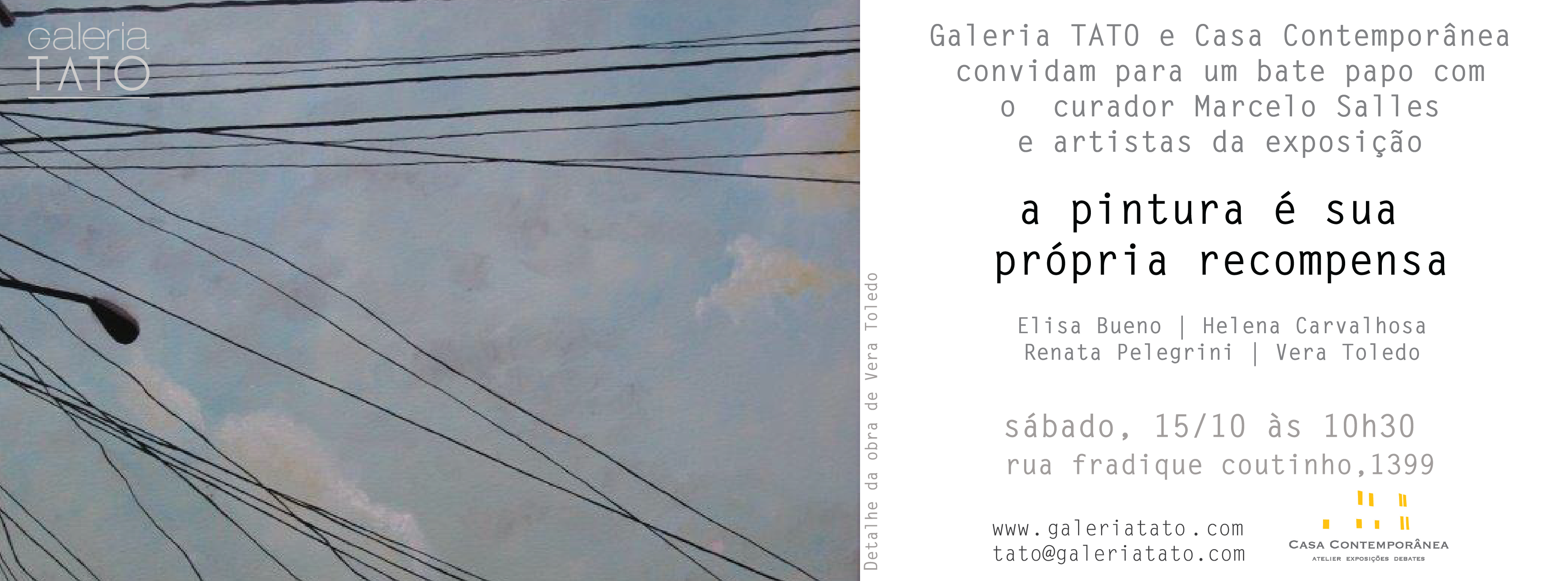
A Galeria TATO e a Casa Contemporânea apresentam a exposição coletiva “A pintura é sua própria recompensa”, com curadoria de Marcelo Salles. A mostra reúne trabalhos de 4 artistas: Elisa Bueno, Helena Carvalhosa, Renata Pelegrini e Vera Toledo.
“A pintura como ato de necessidade e entrega. É assim que as artistas Elisa Bueno, Helena Carvalhosa, Renata Pelegrini e Vera Toledo mostram seus trabalhos na exposição A pintura é sua própria recompensa . Mais do que um jeito próprio de enxergar o mundo é o compartilhar este olhar com o outro que aproxima estas obras das ações incondicionais”
Marcelo Salles
Setembro de 2016
Serviço
Exposição: “A pintura é sua própria recompensa”
Curadoria: Marcelo Salles
Abertura: 04 de outubro de 2016, das 17h as 22h
Período expositivo: 05/10/16 à 22/10/2016
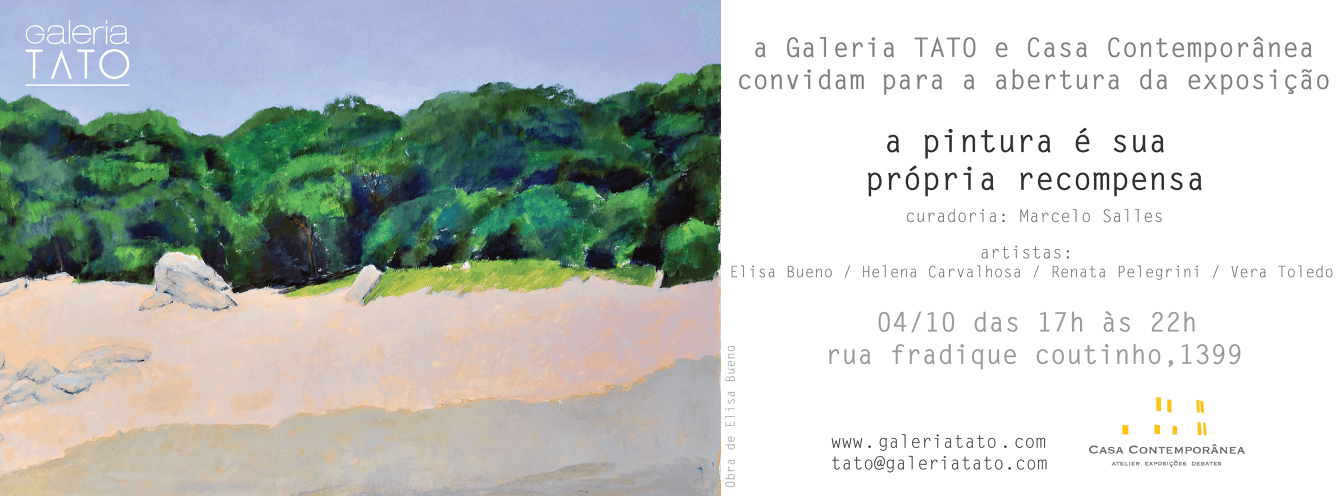
“A Pintura é sua própria recompensa” (1)
Como poderíamos definir algo que, em si mesmo, é sua consumação? -‐ consumação enquanto ato acabado, perfeito, que se faz presente não como término ou cessação deste ato. Algo que ocorre, daí a citação ao presente, como experiência e que levamos adiante como propósito, para tornar-‐se futuro e que ao lembrarmos se tornará passado constituinte do que somos. É essa experiência, com seu caráter individual e autossuficiente (2), que remete ao todo onde estamos e onde também nos reconhecemos.
O reconhecer (conhecer de novo) aquilo que somos se faz através das lembranças de aspectos banais, comuns: as fotos do álbum de casamento que mostramos aos amigos, a cerveja compartilhada com o pai conversando amenidades, a infância que retorna ao circularmos num determinado veículo, os medos de uma maternidade arriscada, um tratamento de saúde que lembra o quanto somos frágeis, o cheiro dos corpos após o sexo. Experiências que falam a respeito do que somos e que se consumam em si mesmas.
Ah, sim, mas falaríamos de pintura.
Não seriam essas experiências vindas do cotidiano, do trivial, que conteriam uma beleza estranha e uma satisfação pessoal advindas de sua consumação? E como transforma-‐las em algo palpável, já que também nos reconhecemos naquilo que fazemos?
As paisagens que nos parecem familiares mas que carregam um grau de incerteza capazes de disparar lembranças comuns estão nas pinturas de Elisa Bueno; assim como a força e o ímpeto das obras de Renata Pelegrini ao retratar o que não é visível em lugares reais, mas que sentimos como um espírito do lugar. Ou tanto quanto as cenas de Vera Toledo que ganham corpo e espírito em pinturas como “varredor de rua” ou “Primavera” onde o tempo presente se estabelece mais pela construção das figuras através da cor do que por seu significado. Talvez como faz Helena Carvalhosa e sua pintura vigorosa e dada a incompletudes , quase como se os escritos de Manoel de Barros fossem visualizados.
O fazer pintura, o ato em si, carrega consigo uma sinceridade ou honestidade de sentimentos e sensações em tudo semelhantes àquelas situações banais descritas acima mas que, da mesma maneira, adquirirão à posteriori sua importância. Penso que isto é válido para qualquer linguagem artística. Tanto a fortuna quanto a desgraça da pintura, porém, residem em sua longa história paralela ao que somos. Talvez por isso seja tão difícil entendê-‐la ou entender a necessidade de quem a faz. Mas também não é difícil explicar o ódio ou o amor para quem não o sente?
Marcelo Salles
curador
1 a frase original (“a arte é sua própria recompensa”) foi citada por Helena Carvalhosa
2 Dewey, John – Arte omo Experiência
“Painting is its own reward” (1)
How could we define something that is finished in itself? Finished in the sense of an act that is complete and perfect but is present not as the end or termination of this act. Something that occurs, therefore the quote is in the present tense, as an experience which we carry forward as an aim so that it becomes the future and by the time we recall it, it will become past and an inherent part of who we are. It is this experience, with its individual and self-sufficient nature (2), that conveys everything about where we are and where we also recognize ourselves.
Recognizing (i.e. knowing once again) what we are occurs through memories of run-of-the-mill, common things: an album of wedding photographs we show friends, the beer shared during a chat with dad, childhood days which return when we are in a particular vehicle, the fear of a risky pregnancy, a treatment for an illness which reminds us of how fragile we are, the smell of bodies after sex. Experiences that speak about what we are and which are finished in themselves.
Sure, but we should be talking about painting.
Would these experiences, stemming from daily life and insignificant incidents, that contain a strange beauty and personal satisfaction not arise from the fact of being finished? How can we transform them into something concrete as we also recognize ourselves in what we are doing?
The landscapes that seem familiar to us but which carry a degree of uncertainty that is capable of stirring up common memories are in the paintings of Elisa Bueno. They are also present in the strength and thrust of the works of Renata Peligrini by portraying that which is not visible in real places but which we feel as a spirit of the place. It is also felt in the scenes of Vera Toledo which gain body and spirit in paintings such as “Varredor da Rua” (Roadsweeper) or “Primavera” (Spring) where the time present establishes itself more by the construction of figures through the color than its meaning. Perhaps also like Helena Carvalhosa with her energetic painting which sometimes show incompleteness almost as if the writings of Manoel de Barros were visualized.
The act of painting in itself carries with it a sincerity or honesty of feelings and sensations in everything similar to these commonplace situations described above and which will acquire their subsequent importance in the same way. I think this is valid for any artistic language. Both the fortune as well as the misfortune of painting lie in its long history that runs parallel to what we are. Perhaps that is why it is so difficult to understand it or understand the need of the person who does it. But is it not perhaps also difficult to explain hate or love to someone who does not feel it?
Marcelo Salles
curator
